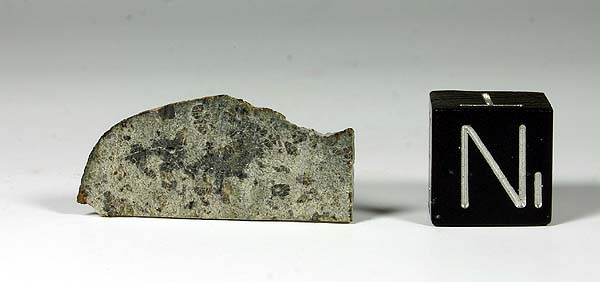
[ad_1]
Muscat – Youth
In a scientific precedent which is the first of its kind in the world; The Martian meteorite “Saih Al-Ahimer 008”, which was found in the Sultanate of Wilayat of Haima in the governorate of Al-Wusta, returned in 1999; To his original home, Mars, through a NASA trip to Mars at a major scientific event aimed at learning about the history of the solar system and its components through different eras from birth of the sun and the planets around it.
Evidence indicates that the rocks give clues to the geological makeup of Mars.
Thus, the Omani meteorite “Saih Al-Ahimer 008” is the first rock that humans return to its homeland, Mars.
This major scientific event will introduce the countries of the world to the Sultanate, the meteorite “Saih Al-Ahimer 008”, which weighs over eight kilograms, was formed around 450 million years ago due to a resulting cosmic event of the collision of an asteroid or comet with the planet Mars and parts of it flying in space before the fall of this comet On the territory of the Sultanate.
NASA’s Arabic story “@Arabic_Nasa” indicated that after careful chemical examination in the “Max Planck” laboratory in Germany, researchers found evidence that the origin of the rock meteorite “Saih Al-Ahimer 008 “goes back to Mars and not to Earth. ; It was therefore chosen to be transported to Mars to be used as a calibration target.
NASA’s Arab Twitter account @Arabic_Nasa said the meteorite found in the Sultanate has been preserved at the Natural History Museum in London, which includes interesting and diverse meteors from different countries around the world, where the number of Martian meteorites obtained in Mother Earth is about 424 Only a meteorite, indicating that the meteorite “Saih Al Ahimer 008” in Hema state is a rare meteorite in the world.
The same account added that the evidence indicates that the rocks bear witness to the geological structure of Mars … and the meteorite “Saih Al Ahimer 008” bore the symbol SaU008 as the first rock that humans return to its homeland.
And the NASA account added that the return of the meteorite “Saih Al Ahimer 008” to Mars was not predicted by geologists in 1999; But when work began to build the Mars Ranger with perseverance, scientists suggested using a Martian meteorite obtained on Earth to be in the ranger. This Omani Martian meteorite contributes to the processing of images captured by the mobile in their true colors and textures, without being affected by natural conditions.
The calculation continued that the Martian meteorite would act directly as a calibrated target, rather than a piece of metal or pieces colored with specific colors as usual.
The NASA account noted that meteorites are not seen as financial wealth as promoted. Rather, it is of scientific significance which helps to help scientists and researchers gain a deep understanding of the characteristics of the solar system and how it was created.
The narrative pointed out that these rocks could be a path to a new scientific opening and that they would provide evidence of the geological makeup of Mars as well as the biological makeup that would inevitably provide insight into the belief in the former existence of living organisms. in the red planet.
Malek bin Muhammad Al-Dohani, board member of the Oman Astronomical Society, stressed that meteorites are of great scientific importance and should be taken care of and studied at local universities by researchers and specialists and contribute to scientific efforts to understand and know the origin and history of the solar system.
In addition to the possibility of taking advantage of it as a tourist by placing it in national museums to attract tourists to get to know these meteorites, especially the Martian and lunar meteorites that were obtained in the Sultanate, which are considered to be rare meteorites.
On the other hand, Dr Saud bin Humaid Al-Shuaili, head of the national space program management team at the Ministry of Transport, Communications and Information Technology, said: Research centers around the world have become interested in the study of meteorites because they are closely related to space sciences, astronomy and earth sciences, the Sultanate’s research and study centers should intensify the interest in these meteorites. Each meteor is a vast amount of information about the intricacies and details of the solar system and represents scientific wealth for astronomers and geologists.
For his part, Dr Muhammad bin Hilal Al-Kindi, head of the Geosciences Consulting Center, said: The Saih Al-Ahimer 8 meteorite is one of the Martian meteorites that was found in Saih Al-Haimer in the governorate of Al-Wusta. meteorite was scientifically documented in 1999 and published in 2000 a scientific article with another meteorite The name “Saih Al-Ahimer 5” was found at a distance of about two kilometers between them, and two pieces of the meteorite Saih Al- Ahimer 8 and three different pieces were found from Saih Al-Haimer 5. He added that the meteorite Saih Al-Haimer 8 belongs to the Shirgutite meteorites, which represent most of the Martian meteorites, indicating that the meteorites from Mars are volcanic. and contain a high content of mineral olivine crystals.
Source link